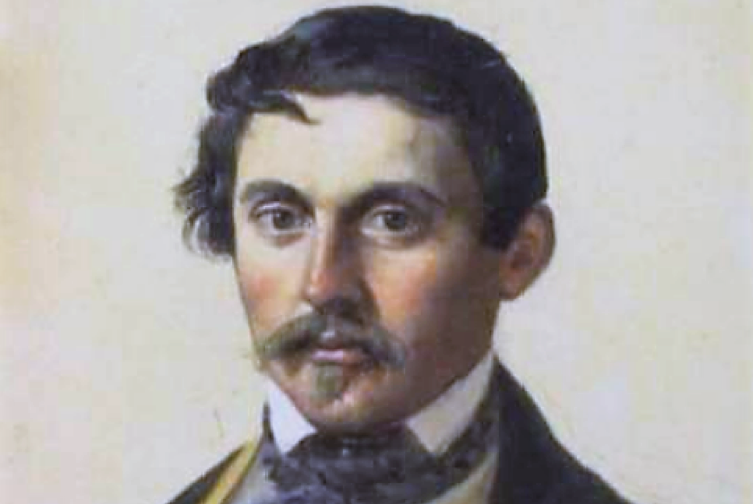Italian brothers who restored Hagia Sophia: Who are the Fossati brothers?
Gaspare Fossati and his brother Giuseppe Fossati (b.1822); They are both architects. The two architects are referred to as the “Fossati Brothers”. Their younger brother Virgilio Fossati also became an engineer.

Architect brothers Gaspare (1809-1883) and Giuseppe (1822-1891) Fossati came to Istanbul when Russian Tsar Nicholas I (1825-55) assigned Gaspare to the construction of the Russian Embassy building. Born in the village of Morcote in the Ticino / Tessin Canton of Switzerland, both brothers received their architectural education at the Accademia di Brera - Brera Academy of Fine Arts in Milan. With the increasing interest in archeology in Milan and Rome in the early 19th century, excavations were started to unearth Classical period artifacts.
When Gaspare went to Rome in 1827, with the recommendations of his teachers at the Academy, Amati, Albertolli, and Pietro Bianchi, the city became the focus of archaeological excavations. The newly repaired Titus Arc de Triomphe and the Colosseum attracted Gaspare's attention and he prepared the drawings of these monumental architectural works. Gaspare, with his interest in the works of the Classical period as well as the Early Christian period and Medieval architectural works, initiated the reconstruction of the Basilica of San Paolo in Ostia. Following his trips to the ancient settlements such as Pompeii, Herculaneum, Paestum, and Capua around Rome and Naples, where excavations were carried out with the architect Pietro Bianchi, who carried out excavations in the cities of Pompeii and Paestum in 1830, Gaspare, who undertook the management of the Pace Temple excavations, reflects these archaeological experiences and what he knew during his travels in his mature works. The effects of the ancient world are traced.
The Fossati brothers, Gaspare (7 October 1809 – 5 September 1883) and Giuseppe (1822–1891), were Swiss architects. They completed more than 50 projects in Turkey (then the Ottoman Empire) during the Tanzimat era. They belonged to the Morcote branch of the Fossati, a prominent Ticinese family with mentions in the historical record going back to the 14th century. Gaspare is most noted for his renovation of the Hagia Sophia in Constantinople, which virtually saved it from destruction.
The album, which Fossati created by examining the statues and structures in Rome for four years, includes charcoal, "lithography" and watercolor paintings of ancient works. The paintings are preserved at the Archivio di Stato, Bellinzona, Fondo Archivistico Fossati (Bellinzona State Archive, Fossati Foundation Archive) in Bellinzona, Canton of Ticino, Switzerland.
Gaspare went to St. Petersburg in 1833 and took part in the construction of the Palace of Tsar Nicholas I. Gaspare, who stayed in Russia for five years, started working with the Imperial architect and engineer Luigi Rusca in 1835, and created many works during his stay in Russia. On December 11 of the same year, Tsar Nicholas I commissioned Gaspare Fossati, who received the title of "Official Palace Architect" at the St. Petersburg Academy of Arts in 1836, for the construction of the Russian Embassy in Istanbul.
Gaspare, who received the title of "Accademico" - academician at the St. Petersburg Academy of Fine Arts in 1837, started his studies at the Russian Embassy a year later, in July 1838. The Russian Embassy building, designed in the "neoclassical" style, was opened to service in 1845 after seven years of work. His brother Giuseppe, who continued the family's architectural tradition, continued his architectural studies in Milan until 1839, and in the same year, he came to Istanbul and started working with his older brother Gaspare. Sultan Abdülmecid (1839-1861) assigned Grand Vizier Reşid Pasha to give the repair of the Hagia Sophia Mosque, which was in a dilapidated state during this period, to the Fossati brothers.
The repair of Hagia Sophia was initially given to Engineer Abdülhalim Efendi, but it was thought that Abdülhalim Efendi would not be able to take care of it sufficiently due to the intensity of his work, and Gaspare Fossati, who was carrying out the construction of Darülfünun at that time, was found suitable. The design prepared by the Fossatis for the restoration of Hagia Sophia was presented to the Ministry of Justice and the work started on May 13, 1847.
Two siblings
Gaspare Fossati (1809 – 1883)
Swiss-born Italian Painter and Architect Gaspare Fossati was born in Morcote in 1809. He studied architecture at the Brera Academy in Milan between 1822 and 1827, and later participated in various archaeological excavations in Italy and worked as an excavation architect.
He went to Russia in 1833 and was appointed to the St. Petersburg Academy of Fine Arts. Fossati, who was given the title of palace architect by the Russian Tsar in 1836, was assigned to build the Russian Embassy building in Istanbul in 1837.
After the embassy building was highly appreciated by the Ottoman dignitaries, he received orders for many monumental projects in Istanbul. These include the Dutch Embassy building, Baltalimanı Coastal Palace, Darülfünûn building and Mekteb-i Sanayi, Telgrafhane-i Amire in Sultanahmet, Nahum Theater in Beyoğlu, and Mustafa Reşid Pasha Tomb in Beyazıt.
In 1847, he was assigned to the repair of Hagia Sophia by Sultan Abdülmecid. For two years, he made repairs in Hagia Sophia with his brother Giuseppe, who was also an architect. During these studies, many drawings of Hagia Sophia were prepared, and with the support of Sultan Abdulmecid, these drawings were printed as a lithography album under the name "Hagia Constantinople, As Recently Restored by Order of H M The Sultan Abdulmedjid" in London in 1852.
The artist, who returned to his country with his brother in 1858, settled in Milan in 1862 and served as a jury member in projects such as the Duomo Square arrangement, Galleria Vittorio Emanuelle II, and Palazzo Marino.
